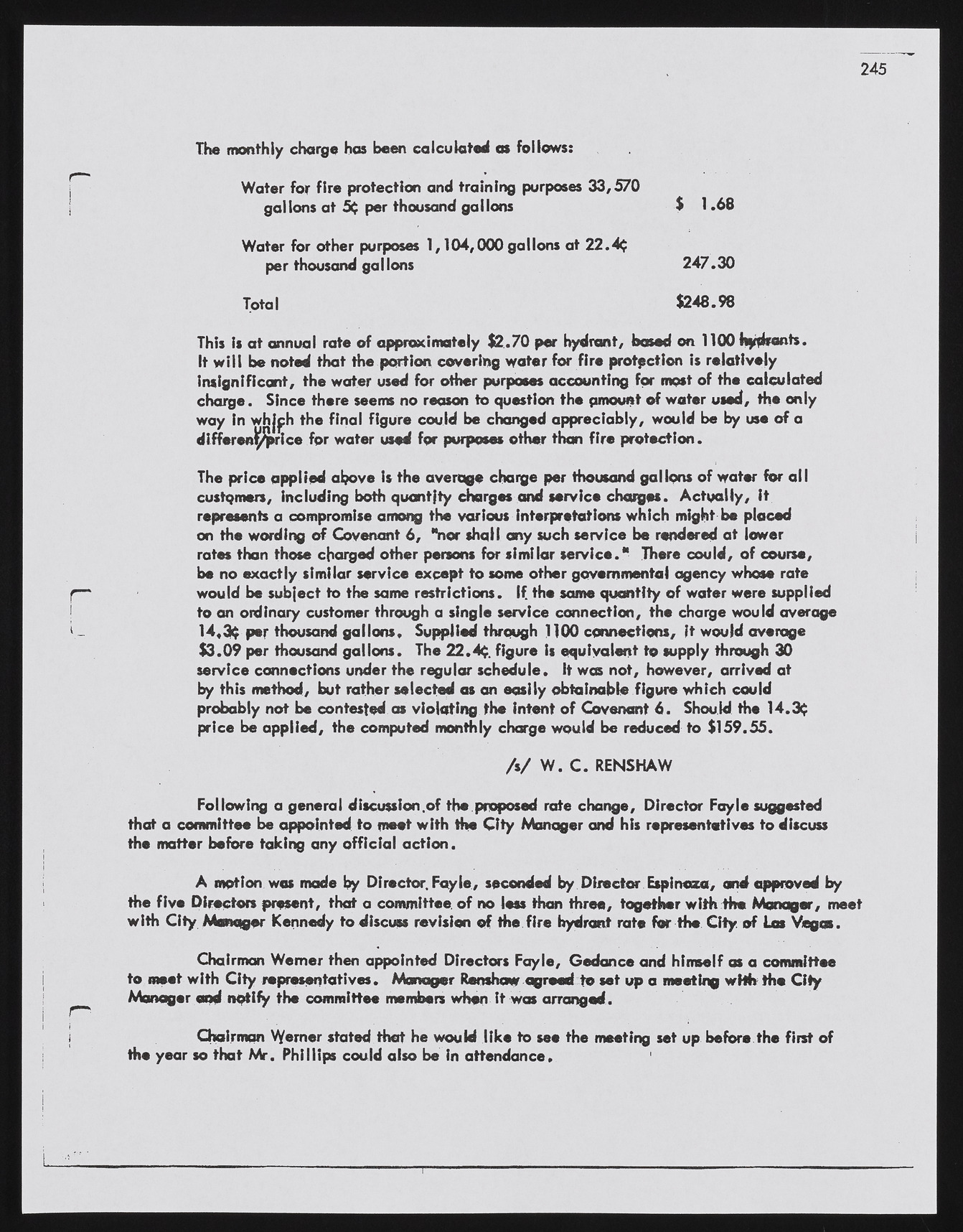Copyright & Fair-use Agreement
UNLV Special Collections provides copies of materials to facilitate private study, scholarship, or research. Material not in the public domain may be used according to fair use of copyrighted materials as defined by copyright law. Please cite us.
Please note that UNLV may not own the copyright to these materials and cannot provide permission to publish or distribute materials when UNLV is not the copyright holder. The user is solely responsible for determining the copyright status of materials and obtaining permission to use material from the copyright holder and for determining whether any permissions relating to any other rights are necessary for the intended use, and for obtaining all required permissions beyond that allowed by fair use.
Read more about our reproduction and use policy.
I agree.Information
Digital ID
Permalink
Details
More Info
Rights
Digital Provenance
Publisher
Transcription
2 4 5 The monthly charge has been calculated as follows: Water for fire protection and training purposes 33,570 gallons at 5$ per thousand gallons $ 1.68 Water for other purposes 1,104,000 gallons at 22.4^ per thousand gallons 247.30 Total $248.98 This Is at annual rate of approximately $2.70 per hydrant, based on 1100 hydrants. It w ill be noted that the portion covering water for fire protection is relatively insignificant, the water used for other purposes accounting for most of the calculated charge. Since there seems no reason to question the amount of water used, the only way in whjph the final figure could be changed appreciably, would be by use of a differenl/price for water used for purposes other than fire protection. The price applied above is the average charge per thousand gallons of water for all customers, including both quantity charges and service charges. A c tu a lly, it represents a compromise among the various interpretations which might be placed on the wording of Covenant 6 , "nor shall any such service be rendered at lower rates than those charged other persons for similar service." There could, of course, be no exactly similar service except to some other governmental agency whose rate would be subject to the same restrictions. If. the same quantity of water were supplied to an ordinary customer through a single service connection, the charge would average 14,3$ per thousand gallons. Supplied through 1100 connections, it would average $3.09 per thousand gallons. The 22.4$, figure is equivalent to supply through 30 service connections under the regular schedule. It was not, however, arrived at by this method, but rather selected as an easily obtainable figure which could probably not be contested as violating the intent of Covencmt 6 . Should the 14.3$ price be applied, the computed monthly charge would be reduced to $159.55. /s/ W . C . RENSHAW Following a general discussion.of the proposed rate change, Director Fayle suggested that a committee be appointed to meet with the C ity Manager and his representatives to discuss the matter before taking any official action. A motion was made by Director. Foyle, seconded by Director Espinoza, and approved by the five Directors present, that a committee, of no less them three, together with the Manager, meet with C ity M anager Kennedy to discuss revision of the fire hydrant rate for the City, of Las Vegas. Chairman Wem er then appointed Directors Fayle, Gedance and himself as a committee to meet with C ity representatives. Manager Renshow agreed to set up a meeting w ith the C ity Manager aod nptify the committee members when it was arranged. Chairman Warner stated that he would like to see the meeting set up before the first of the year so that M r. Phillips could also be in attendance.

